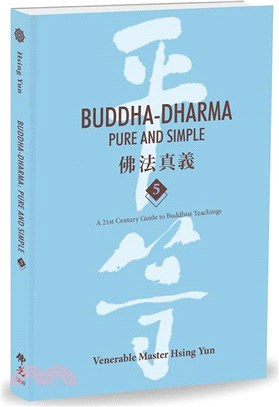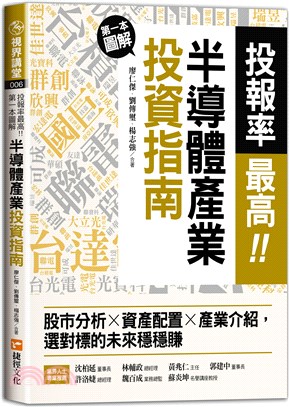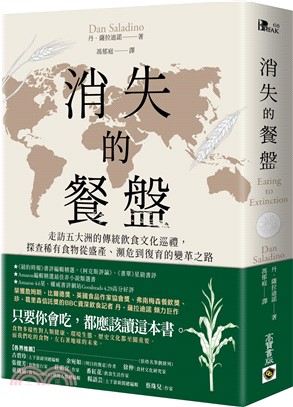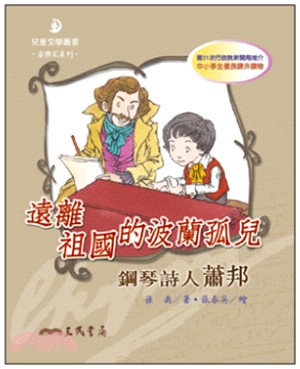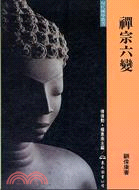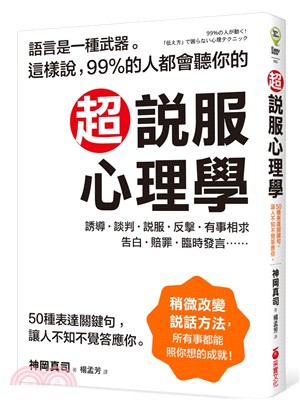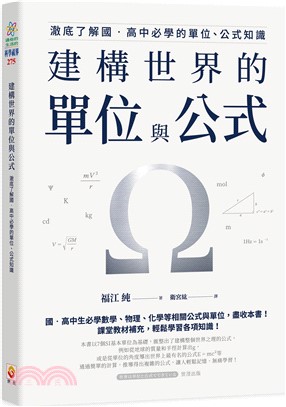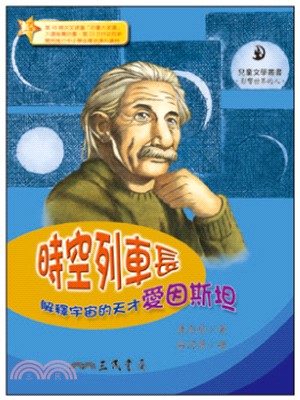Buddha-Dharma: Pure and Simple 5
- 系列名:文選叢書
- ISBN13:9789574576456
- 出版社:佛光文化
- 作者:Editor-in-Chief: Venerable Miao Guang
- 裝訂/頁數:平裝/200頁
- 規格:21cm*14cm*1cm (高/寬/厚)
- 版次:1
- 出版日:2022/10/01
商品簡介
All Buddhist practice begins with right view, for it is the compass that points toward the true path of cultivation. This fifth installment continues laying the groundwork of this foundation by addressing age-old misconceptions. Covering a wide range of social issues from the perspective of the Buddha-Dharma, Venerable Master offers readers a practical but profound approach to Buddhist practice in daily life.
作者簡介
About Venerable Master Hsing Yun
Venerable Master Hsing Yun was born in Jiangsu Province, China in 1927. He studied at various renowned Buddhist institutions such as Qixia Vinaya College and Jiaoshan Buddhist College.
Soon after his arrival in Taiwan in 1949, he became the chief editor of Human Life, a Buddhist magazine. In 1952, his efforts in establishing Buddhist Chanting Association strengthened the foundation for his subsequent endeavors in the promotion of the Dharma. Venerable Master founded Fo Guang Shan Monastery in 1967, with the primary goal of promoting Humanistic Buddhism through Buddhist education, culture, charity, and propagation of the Dharma. Since then, over two hundred branch temples have been established in major cities around the world. He has also set up art galleries, libraries, publishing houses, bookstores, mobile clinics, Buddhist colleges, and universities including: University of the West, Fo Guang University, Nanhua University, Nan Tien Institute, and Guang Ming College. In 1977, the Fo Guang Tripitaka Editorial Board was formed to compile the Fo Guang Buddhist Canon and the Fo Guang Dictionary of Buddhism. Many other works on Buddhism have also been published.
Venerable Master Hsing Yun has dedicated his life to propagating Humanistic Buddhism. As a global citizen, he continues to foster “joy and harmony,” “oneness and coexistence,” “respect and tolerance,” and “equality and peace” throughout the world. When he founded the Buddha’s Light International Association in 1991 and was elected president of its world headquarters, he was closer to realizing the ideal of having “the Buddha’s light shining throughout the three thousand realms, and the Dharma water flowing across the five continents.
"
序
Translator’s Introduction
The first two volumes of Buddha-Dharma: Pure and Simple focus on topics of faith and doctrine, while the third and fourth volumes explore the more practical aspects of Buddhist practice. Upon opening this volume, readers will discover a list of seemingly unconnected topics ranging from the Buddha's stories (”Did the Buddha Ever Express Anger?”, “Ten Hardships of the Buddha”), to specific aspects of cultivation (“Four Kinds of Comportment,” “Joined Palms,” “No Eating After Noon”), as well as Chinese folk religion (“Deities,” “Tudigong,” “Caigu and Shigu”).
What this volume offers is a journey through the history of Buddhism, beginning from the founder himself to Buddhist practitioners of the 21st century, and traditional practices originated from India to modern endeavors assisted by advanced technology. As Buddhism passed down from one generation to the next, many aspects were altered due to cultural differences, and new practices were added. The original spirit of the Buddha's teaching was lost, forgotten in the maze of time. Venerable Master’s critiques and insights brush away the cobwebs that clung to these so-called Buddhist traditions to reveal the original intent of the Buddha, and how we can better integrate the Buddha-Dharma into today's culture, society, and world.
Given some topics can be culture-specific, some terms are transliterated rather than translated. This is done for a few reasons: first, when the Chinese phrase has no exact equivalent in English. Second, to retain the rich meaning of the Chinese context. Third, when the term is also used as a wordplay. To aid the reading process, the Chinese characters and the literal meaning of these transliterations are provided in the article, and additional explanations can be found in Notes.
Buddhism has a rich history, diverse traditions, and multifaceted practices, but its core teachings remain the purification of our bodies and minds and the enhancement of moral ethics. It also teaches us to be kinder and more compassionate people and strive for a life of liberation and perfect ease. The personal examples of the Buddha and generations of Buddhist practitioners serve as role models and inspiration.
目次
About Venerable Master Hsing Yun
Translator’s Introduction
Preface
1. Did the Buddha Ever Express Anger?
2. Unhuman
3. Skillful Teachings
4. Ten Hardships of the Buddha
5. A Sesame Seed and a Grain of Wheat
6. Where Can Mentors Be Found?
7. Dharma Friend
8. Where Does One Abide?
9. Buddha Selection Court
10. Renunciation
11. Siksamana
12. Does Arthats Commit Killing, Stealing, and Sensual Conduct?
13. Haiqing and Changshan
14. Four Kinds of Comportment
15. To Speak Gently and Steadily
16. Joined Palms
17. Prostration
18. Spiritual Retreat
19. Alms Procession
20. No Eating After Noon
21. Formal Meal
22. The Benefits of a Vegetarian Diet
23. Making Offerings
24. The Essence of Offering to the Sangha
25. The Merits of Rejoicing in Others’ Virtues
26. Meritorious Blessings
27. Supernatural Powers
28. Visitor Administrator
29. Sickbay
30. Roaming in Jianghu
31. Cloud and Water Practices
32. Dharma Protector
33. Light Offering
34. First Incense, First Bell, and First Drum
35. Consecration Ceremony
36. Rebirth
37. Where are Heaven and Hell Found?
38. Deities
39. Tudigong
40. Ghosts
41. Original and manifested bodies
42. Avalokitesvara
43. Mahasattva
44. Unreasonableness and Unfeelingness
45. Was the Sixth Patriarch Illiterate?
46. Recognizing Chan Master Shenxiu
47. Sudden and Gradual Enlightenment Are As Equals
48. Bodhisattva and Volunteer
49. Modern-day Bodhisattvas
50. Zhao Puchu Bodhisattva
51. Yang Renshan Bodhisattva
52. Caigu and Shigu
53. Young Boy and Young Girl
54. Being in a Mist
55. Three Meetings Beneath the Dragon-Flower Tree
書摘/試閱
Did the Buddha Express Anger?
Sixty years ago, I wrote The Biography of Sakyamuni Buddha. I felt that my writing was not very detailed, as my knowledge of the Buddha’s life was limited by the scope of my reading. However, I concentrated on his character, his relationships with his devotees, and the details of his daily life.
A question occurred to me while reading the biography of the Buddha: did the Buddha ever express anger? The answer is yes, the Buddha did get angry. However, his anger did not arise from hatred. Instead, it stemmed from an earnest wish for his disciples to improve. For instance, the Buddha expressed anger at Rahula for telling lies.
Once, when the Buddha returned from his travels, Rahula filled a basin with water to wash the Buddha's feet. After washing his feet, the Buddha said, “Rahula, take this water and drink it.”
Rahula replied, “This water is dirty after washing your feet, it is undrinkable!”
Then the Buddha said, “Well, take this basin and put rice in it.”
Rahula replied, “The basin is too dirty, we cannot serve food in it.”
The Buddha looked at the basin and suddenly kicked it away. Seeing that the Buddha was angry, Rahula became terrified.
The Buddha then finally explained, “Rahula, you lied about where I was and deliberately misled people in the wrong direction. You tricked and deceived them. Your lies are like the dirty water in this basin. Your lies have tainted your mind, just like this dirty basin in which no one would serve food. No one will care if this basin breaks because it is worthless and of little value. Like this broken basin, you will be disliked and undervalued by people if you keep telling lies.”
Through this incident, we see that the Buddha’s anger was motivated by his love and care for Rahula.
Besides Rahula, the Buddha was also concerned about other people. He admonished other disciples and expressed his anger towards them. The Buddha would, for instance, admonish his assembled disciples, “Learn to be ashamed and remorseful.” This is because some disciples have no remorse and therefore fail in their cultivation or do not know to self-reflect. To be ashamed is to be disappointed in oneself, and to be remorseful is to be repentant towards others. With shame and remorse, one will turn over a new leaf and improve.
The Buddha would also admonish his disciples for their ignorance. Whenever they acted deludedly, mindlessly, irresponsibly, or unskillfully, the Buddha would reprimand them with, “You are ignorant. Act wisely in the future.”
Furthermore, the Buddha would also say, “You are ignorant of suffering.” The Buddha did not wish for arrogant, haughty, or bureaucratic behavior in his disciples, therefore he would remind them, “It is important to be remorseful and recognize afflictions and ignorance.”
“Although appearing to be chastising, berating, or scolding when admonishing his disciples, the Buddha was genuinely educating them, in different ways, with immeasurable kindness and compassion. Therefore, the first step to truly understanding the Buddha-Dharma is to realize the Buddha’s intentions fully.
主題書展
更多主題書展
更多書展本週66折
您曾經瀏覽過的商品
購物須知
為了保護您的權益,「三民網路書店」提供會員七日商品鑑賞期(收到商品為起始日)。
若要辦理退貨,請在商品鑑賞期內寄回,且商品必須是全新狀態與完整包裝(商品、附件、發票、隨貨贈品等)否則恕不接受退貨。




